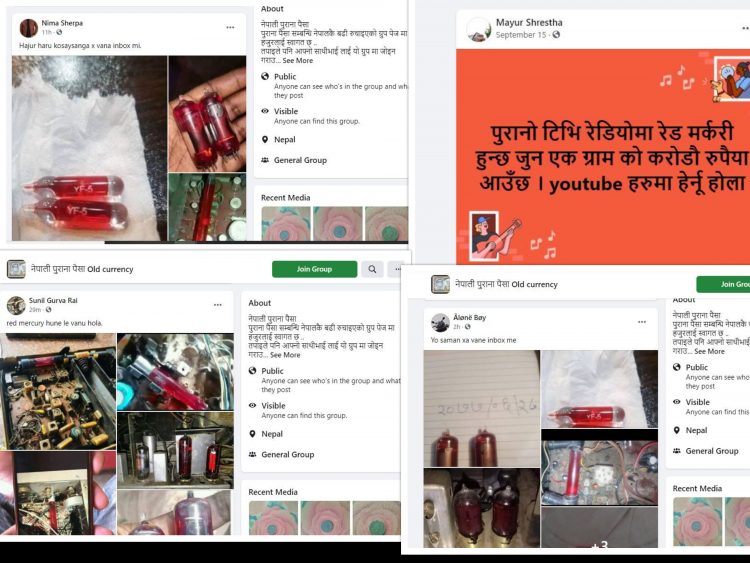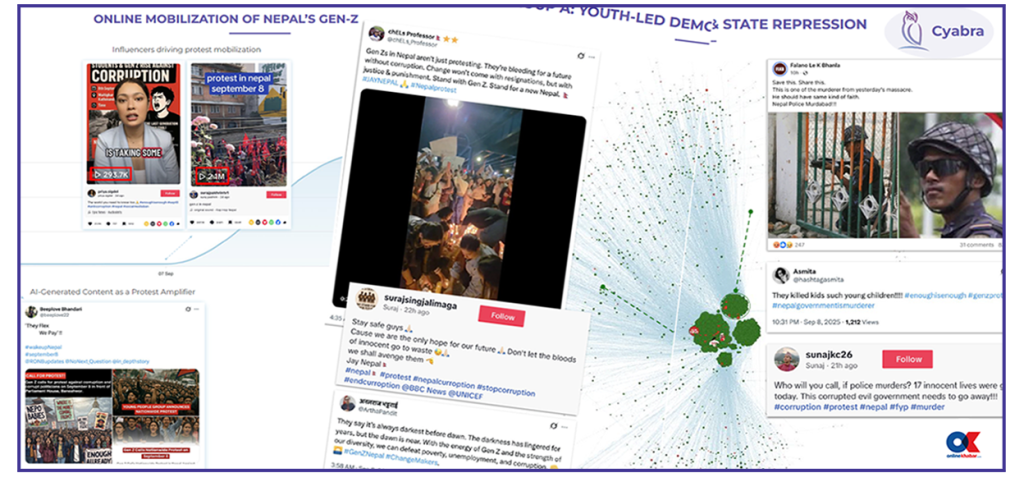Over the past few days, social media users in Nepal have posted photos and statuses along with claims that old TV and radio sets that purportedly contain a substance called “red mercury” would fetch fortunes.
“Old TV and radio sets contain red mercury, which costs tens of millions of rupees a gram. Check it out on YouTube,” read Facebook user Mayur Shrestha’s post.
Commenting on a Twitter thread, Sadiksha Karki wrote, “Philips (a Dutch multinational company) is itself looking for the substance. Because the substance used in the radio is rare, a team from Germany is visiting Nepal and India (in search of it).”
On Facebook posts, most users have responded to the offer claiming they have it. While some users have asked those claiming to possess the substance to inbox [send private messages on social media] their contact details.
What is “red mercury”?
Contrary to what is being portrayed on social media platforms, red mercury is not a hidden treasure but a source of countless rumours and myths that have persisted for decades. Though it is shrouded in mystery, with its existence unproven yet, the myths around it have thrived since the Cold War. In a 2019 article, the BBC said adverts and video offering “red mercury” for sale were found online. In 2015, The New York Times Magazine published a long-form report by war correspondent CJ Chivers with the headline: The Doomsday Scam. The New York Times’ story details how the ISIS fighters embarked on the quest to find red mercury.
What can be deduced from these articles is that con artists in several countries have used this dubious substance to swindle the unsuspecting public. In 2007, scientific journal Science Direct published a research paper titled ‘Analysis of an Object Assumed to Contain Red Mercury’. The study also found no red mercury in the samples the researchers had collected.
According to the UK-based risk assessment and intelligence firm S-RM, red mercury is not thought to exist outside of conspiracy theories, though US physicist Samuel Cohen had claimed it existed. Mercury is a substance used to make nuclear weapons. This substance, like lead, can hold a large amount of heat. It is also used for medicinal purposes.
In India since September, rumours about red mercury have been spreading through social media platforms and YouTube channels. Claims that it was worth tens of thousands of rupees went viral on Hindi-language websites and digital platforms. India’s fact-checking website Factly has debunked the rumour.
In Nepal, people have shared photos and text about red mercury on a Facebook group called ‘Nepali Purano Paisa’ which has more than 57,000 users. The Facebook group shares posts about old coins and banknotes. Users have posted photos of a small bottle with red liquid. Various users have said that they have it or are willing to buy it.
We spoke to Basant Giri, a scientist at Kathmandu Institute of Applied Sciences about this. “It looks like a hoax circulating around for decades across the globe,” he told South Asia Check. “There’s no such chemical or material called red mercury.” He said the red-coloured liquid may just be “red dye” or some mercury compound which does not have a “special” price as such. “Rather, most of the mercury compounds are toxic,” he said. “The old electronic devices contain some heavy metals such as lead and others. The heavy metals, which are toxic, can be recycled, but are not precious,” he said.
The article first appeared on South Asia Check.
























